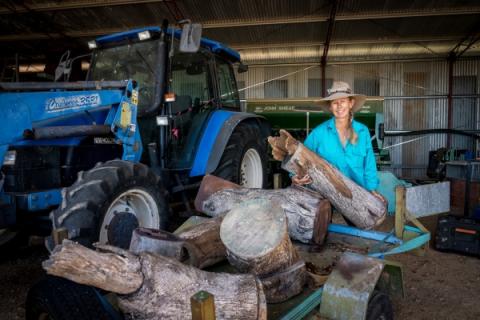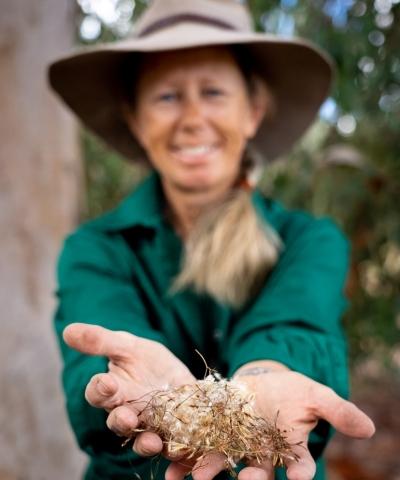Lisa McCann is not your average Central Western NSW grazier and the land she calls home is far from being your average grazing property.
From the discovery that her mother had ancestral Wiradjuri links nearby to the deep feeling of being “home”, Lisa knew as soon as she saw her 1200-hectare property on the northeastern side of the Herveys Range that this was where her family was meant to be.

They settled onto Mirrambeena and in 2019 entered into a funded conservation agreement with the NSW Biodiversity Conservation Trust after entering a successful bid in the 2018 Central Tablelands conservation tender. The family quickly began the work needed to restore the property’s native ecological communities while continuing to operate as a grazing business.
“If I could exist without cattle on Mirrambeena I would. If I could devote Mirambeena entirely to conserving biodiversity, I would,” Lisa said.
“There used to be a larger herd here, but in order to survive at Mirrambeena alternations had to be made. From 2016 we returned to a more regenerative natural sequence and thoughtful approach to production using the natural systems that are present not fighting to alter them.”
Lisa acknowledged the tricky balancing act to combine sustainable livestock grazing with the management of grasslands used for grazing.
Conservation management

She said she relied on the conservation management actions written specifically for her property with the expertise of BCT ecologists and her knowledge and observations of the land.
“I learn every day in some way,” she said.
“I generally work alone or with my dad doing this essential conservation work. My mother grows seedlings and her hand paintings record our insect life, which I bring home to show her.
"We are repairing conditions to encourage the diversity in all its forms to flourish or move back into the area. We've been planting seed with seed ball applications doing minor soil disturbances to encourage seed bank reactions.”
Lisa has also been busy with weed control, constructing and installing arboreal hollows and has redesigned and constructed an alternative method of floodgate fencing.
Thanks to Lisa and her family’s deep connection to the land, Mirrambeena is coming back to life after the impacts of past unsustainable farming practices. Glossy black-cockatoos are now regular visitors and Lisa can see a robust return of native plant life.
Her approach to conservation is "respect, alter, listen, observe". Instead of looking for quick results she is thinking of the future and hopes her grandchildren will also learn the power of observation, patience, persistence and perseverance.